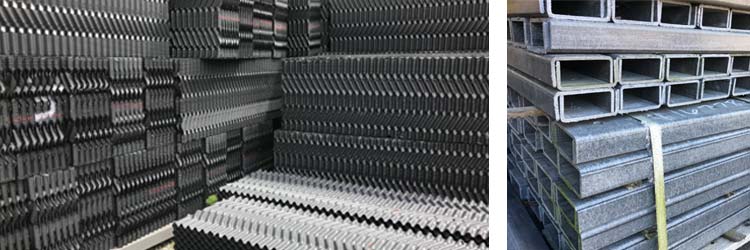


The fan deck is merely a supporting platform for fan cylinders and also makes access way to the fan and system of water distribution. There are 2 objectives of Louvers: a) retaining of circulating water inside a cooling tower and b) distribution of airflow inside the fill media in an equal manner. They transmit power from the output shaft of the motor to the input shaft of the gear reduction unit. The torque of the tube permanently lights up the motor, driveshaft, and gear reducer. They reduce speed based on the needs of the cooling tower fan. The body of the valve within a distribution valve is fashioned to withstand the corrosive environment. They are a cooling tower component that regulates the flow of hot water for uniform distribution in cells. Nozzles permit uniform distribution of hot water, which is inside a cell of the cooling tower. Such plastics include PVC, ABS, Polypropylene, and glass-filled Nylon. The majority of cooling tower nozzles are created from plastic. Fan motors must be equipped with overload relay and protection systems of earth fault relay. Petro-chemical and refinery cooling tower applications need fan motors that are explosion-proof because of heat exchangers that are potentially leaky. Following are the major spare parts of cooling towers :

Typical cooling towers' applications include cooling of circulating water utilized in the Petro-chemical industry, oil refineries, chemical industry, nuclear power stations, thermal power stations, and the common HVAC systems in buildings.īAC is a leading manufacturer of cooling towers, and there is much demand for BAC cooling tower parts. The combination of cool air and warm water releases latent heat of vaporization that causes the water to cool. Every cooling tower operates on the principle of removing heat from water by evaporating a small part of the water, which is re-circulated via the unit. A cooling tower is a device for heat removal which uses water to move waste heat into the atmosphere.


 0 kommentar(er)
0 kommentar(er)
